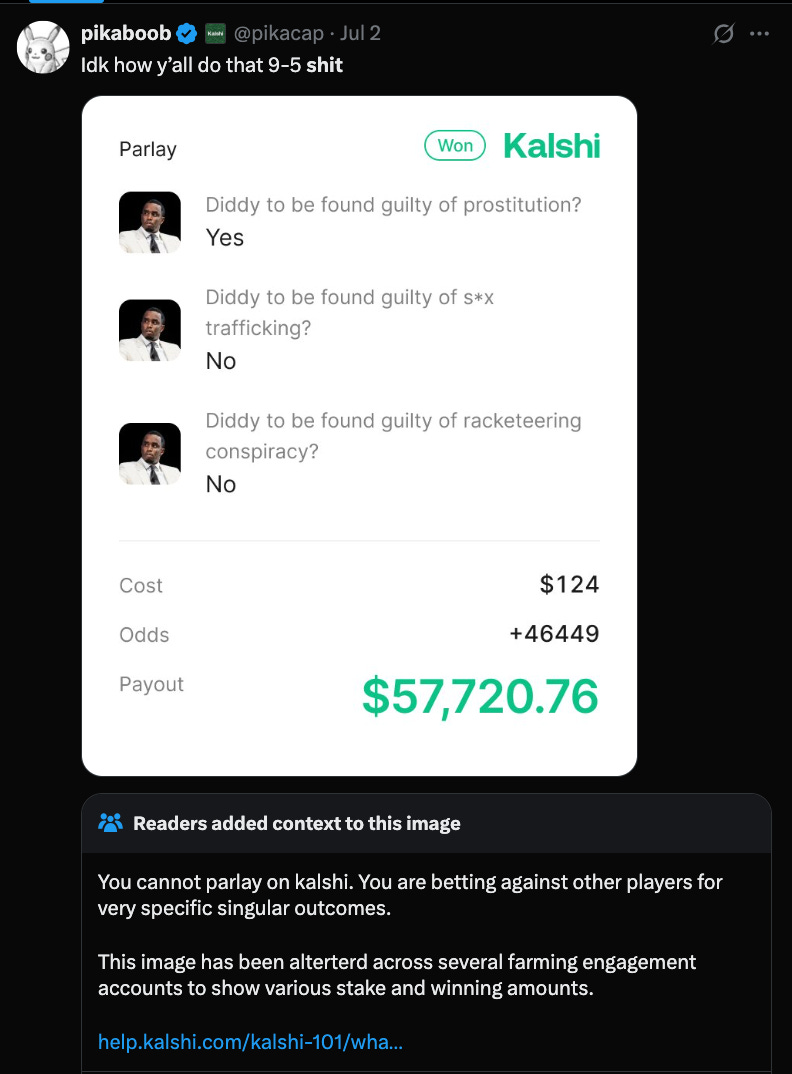Kalshi Keeps Promoting Fake Parlays On Social Media
Kalshi has been promoting fake parlay slips on social media that are also being shared by CEO Tarek Mansour.
You cannot currently bet parlays on Kalshi, although at one point the prediction market platform offered a limited parlay functionality, including on the Oscars.
Here are a few examples I have come across that have been signal-boosted via influencers on X/Twitter; you can click on the pictures to get to the actual tweet. One of them even has a community note saying, “You cannot parlay on kalshi. You are betting against other players for very specific singular outcomes. This image has been alterterd (sic) across several farming engagement accounts to show various stake and winning amounts.”
There is also an example I won’t share because of inappropriate language from an account with 2.5 million followers.
I am not sure exactly how state sports betting regulators would handle a similar episode with a regulated sportsbook, but a couple of takeaways:
There are definitely some gambling regulators that would take issue with this type of marketing (examples might include Ohio and Massachusetts). One of the fake slips above implies someone won $50,000 with a ticket that doesn’t exist, which would raise eyebrows in many states. (Interestingly, Grok on X reports the fake parlay on Sean Combs to be “likely real” for anyone claiming it’s clearly meant to be comedy.) I don’t think a sportsbook would dream about trying to do something like this for fear of regulatory blowback.
There aren’t any meaningful guardrails on how prediction markets advertise. The Commodity Futures Trading Commission seemingly has little interest in enforcing or establishing rules about how prediction markets can advertise. There are rules and limitations around sports betting marketing — including via third parties — and there have been legislative efforts to limit or ban advertising. Maybe you think the above is a nothingburger — and that’s fine. But if prediction markets continue to grow and expand, we’re certainly going to see marketing efforts that are more suspect and aggressive in the future.
ICYMI, I wrote this at my other newsletter:








